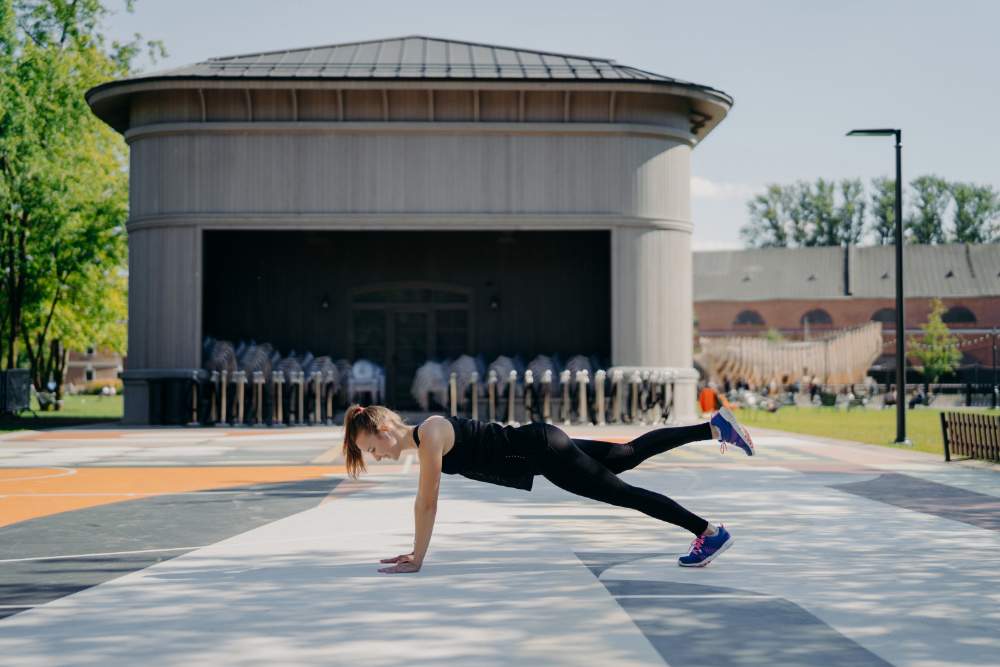Getting fit for emergency services work isn’t like regular gym training. You need specific preparation that matches what firefighters, paramedics, and police officers actually do on the job. This guide shows you exactly how to train for emergency services fitness tests in Australia.
What Fitness Tests Do They Require?
Australian emergency services use standardised physical assessments that test your real-world capability. Fire and Rescue NSW uses the Physical Aptitude Test (PAT), which includes a 2.4km run in under 11 minutes, ladder climbs, hose drags, and equipment carries. Victoria Police requires candidates to complete a 15-metre multistage shuttle run reaching level 7.1. Ambulance Victoria tests include a 20-metre shuttle run, stair climbs with equipment, and patient lifting simulations.
These tests measure cardiovascular endurance, muscular strength, and functional movement patterns. Research shows that emergency responders need high levels of fitness because their work involves carrying heavy equipment, climbing stairs, dragging patients, and maintaining performance during extended shifts. The tests aren’t arbitrary. They directly relate to job tasks you’ll perform in emergencies.
How Long To Prepare?
Most people need 12 to 16 weeks of consistent training to pass emergency services fitness tests. This timeline assumes you’re starting from a moderate fitness base. If you’re currently inactive, add another 4 to 8 weeks for foundational conditioning.
Studies on fitness adaptation show that cardiovascular improvements occur within 6 to 8 weeks of regular training. Strength gains appear even faster, with measurable increases in 4 to 6 weeks. However, the specific movement patterns required for emergency services fitness test training need practice time. You’re not just getting stronger. You’re teaching your body to perform under fatigue while wearing heavy gear.
What Type Of Training Works Best?
Strength training combined with high-intensity interval work produces the best results. Your program should include three strength sessions per week focusing on compound movements like squats, deadlifts, rows, and overhead presses. These exercises build the muscle mass and bone density needed for physically demanding emergency work.
9 Steps To Shed 5-10kg In 6 Weeks
Includes an exercise plan, nutrition plan, and 20+ tips and tricks.
Download FreeAdd two to three cardio sessions weekly. Mix steady-state running with interval training. One session might be a 30-minute continuous run. Another could be 10 rounds of 30-second sprints with 90-second recovery periods. This combination develops both aerobic capacity and the ability to perform intense bursts of activity.
Research from exercise science shows that functional training movements improve job performance more than isolated exercises. Include farmer’s carries, sled pushes, and weighted step-ups. These mimic actual emergency service tasks like carrying equipment, moving patients, and climbing stairs with gear.
Do You Need A Personal Trainer?
Working with a qualified trainer significantly improves your success rate. Personal trainers who specialise in emergency services preparation understand the specific test requirements and can design programs that target your weak points. In Melbourne, expect to pay between $80 and $120 per session for one-on-one training.
The value comes from proper technique instruction and program design. Poor form during strength training leads to injury, which derails your preparation. A trainer ensures you’re lifting safely while progressively overloading your muscles. They also provide accountability, which research shows increases workout consistency by 40 to 60 percent.
If budget is tight, consider small group training at $35 to $60 per session. You still get expert guidance while sharing costs with others preparing for similar tests.
How Much Cardio Each Week?
Aim for 150 minutes of moderate-intensity cardio or 75 minutes of high-intensity work weekly. This aligns with recommendations from exercise physiology research and meets the cardiovascular demands of emergency services work.
Break this into manageable sessions. Three 30-minute runs plus two 15-minute high-intensity interval sessions totals 120 minutes. Add a longer 45-minute session on weekends to reach 165 minutes. This volume builds the aerobic base needed for extended emergency responses while developing the anaerobic capacity for intense physical efforts.
Don’t skip the interval work. Emergency responders frequently operate at 75 to 85 percent of maximum heart rate during calls. Interval training specifically prepares your body for these demands.
Most Important Strength Exercises
Squats, deadlifts, and rows form the foundation of emergency services strength training. These compound movements build multiple muscle groups simultaneously and create functional strength that transfers to job tasks.
Key Exercises
- Squats develop leg strength for stair climbing and lifting from ground level
- Deadlifts strengthen your posterior chain for lifting and carrying heavy loads
- Rows build upper back strength needed for pulling hoses and moving equipment
- Overhead presses for shoulder strength
- Hip thrusts for glute development and lower back protection
Research shows that building muscle through strength training increases your metabolic rate and improves bone density, both critical for long-term career health. Include these exercises twice weekly with weights that challenge you for 6 to 12 repetitions.
Training For Specific Test Components
Practice the actual movements using similar equipment and weights. Many gyms now offer functional fitness areas with sleds, ropes, and weighted objects. Use these to simulate test conditions.
For hose drags
Attach a rope to a weight sled loaded with 40 to 50 kilograms. Drag it backwards for 30 metres, rest 2 minutes, and repeat for 5 rounds. This builds the specific strength and endurance needed for the actual test.
For ladder climbs
Use stair machines or actual stairs while wearing a weighted vest. Start with 10 kilograms and progress to 20 kilograms as you adapt. Climb for 3 to 5 minute intervals with 2-minute rest periods.
Equipment carries
Translate directly to farmer’s walks. Hold heavy dumbbells or kettlebells and walk 40 metres. Rest and repeat for 6 to 8 rounds. This builds grip strength and core stability under load.
What Should You Eat?
Prioritise protein intake at 1.6 to 2.2 grams per kilogram of body weight daily. For an 80-kilogram person, that’s 128 to 176 grams of protein spread across meals. Protein supports muscle recovery and growth from your training sessions.
Nutrition Guidelines
- Include complex carbohydrates: 3 to 5 grams per kg on training days
- Don’t eliminate fats: 20 to 30 percent of daily calories from fish, nuts, olive oil
- Hydration: 2 to 3 litres of water daily, more on training days
Research shows that even 2 percent dehydration reduces physical performance by 10 to 20 percent.
How Much Does Training Cost In Melbourne?
Budget between $200 and $500 monthly for comprehensive preparation. This includes gym membership ($60 to $120), personal training sessions ($160 to $480 for 2 to 4 sessions), and nutrition supplements ($40 to $80).
Cost Breakdown
- Gym memberships: $15 to $30 weekly
- Personal training: $70 to $150 per session (CBD vs suburban)
- Small group sessions: $40 to $60 per person
Consider this an investment in your career. Emergency services positions in Australia pay $65,000 to $95,000 annually for entry-level roles. Proper preparation increases your chance of passing tests on the first attempt, getting you into paid work faster.
Common Training Mistakes
Avoid These Errors
- Training like a bodybuilder instead of an athlete with isolated exercises
- Neglecting cardiovascular training until a few weeks before testing
- Overtraining seven days weekly without rest
- Poor nutrition undermining training efforts
- Ignoring mobility work creating injury risk
Your body needs recovery time to adapt and grow stronger. Schedule at least two complete rest days weekly. Spend 10 to 15 minutes daily on stretching and mobility exercises.
Frequently Asked Questions
Can I train for emergency services fitness tests at home?
Yes, but it’s harder without proper equipment. You need weights for strength training and space for cardio work. Invest in adjustable dumbbells ($200 to $400), a pull-up bar ($50 to $100), and resistance bands ($30 to $60). Use stairs or hills for cardio if you don’t have a treadmill.
How often should I practice the actual test components?
Practice specific test movements once weekly during your preparation phase. More frequent practice risks overuse injuries. Use the rest of your training to build the underlying fitness that makes test performance easier.
What if I fail the fitness test?
Most agencies allow retesting after a waiting period, typically 3 to 6 months. Use this time to address your weak areas with targeted training. Many candidates pass on their second or third attempt after proper preparation.
Should I train differently if I’m female?
The test standards are the same regardless of gender, so your training approach should be similar. Women may need to focus more on upper body strength development since that’s typically a relative weakness. The training principles of progressive overload and consistent practice apply equally.
How do I maintain fitness after passing the test?
Continue strength training twice weekly and cardio three times weekly. This maintains the fitness level you’ve built. Many emergency services provide on-duty fitness time, making maintenance easier once you’re employed.
Your Next Steps
Start your emergency services fitness test training today with a clear 12-week plan. Week one focuses on establishing baseline fitness and learning proper exercise technique. Weeks two through eight build strength and cardiovascular capacity progressively. Weeks nine through twelve add test-specific practice while maintaining your fitness base.
Track your progress weekly. Test your 2.4km run time, maximum push-ups, and strength levels every two weeks. This data shows whether your program is working and where you need to adjust.
Find a training partner preparing for the same tests. Research shows that training with others increases consistency and effort levels. You’ll push each other harder and maintain motivation through difficult training phases.
Emergency services careers offer job security, good pay, and meaningful work. Proper physical preparation ensures you’re ready for both the entry tests and the demanding job ahead. Put in the training work now, and you’ll be ready when test day arrives.


